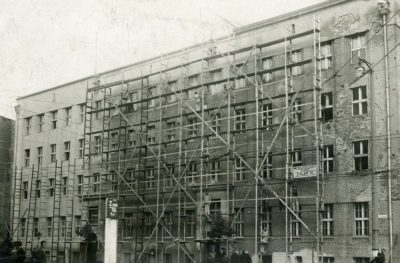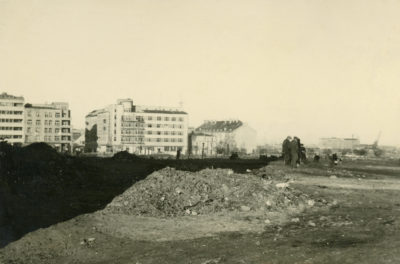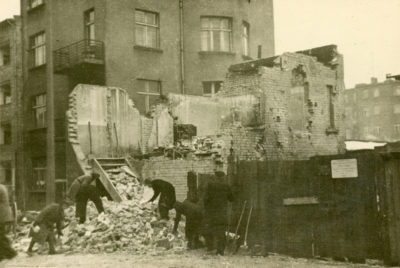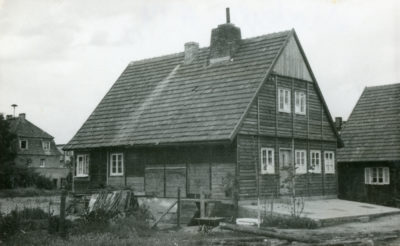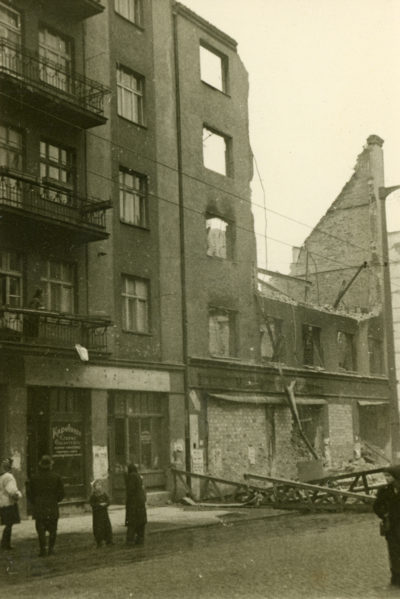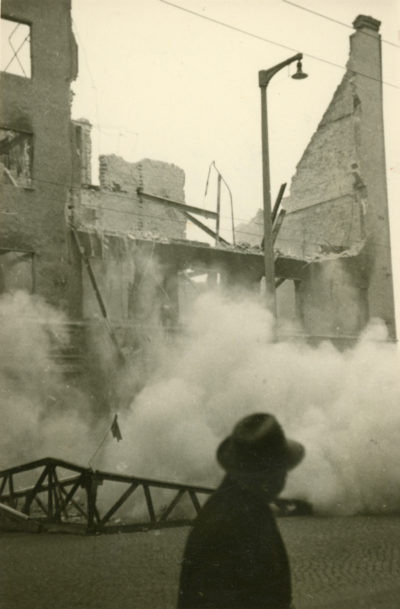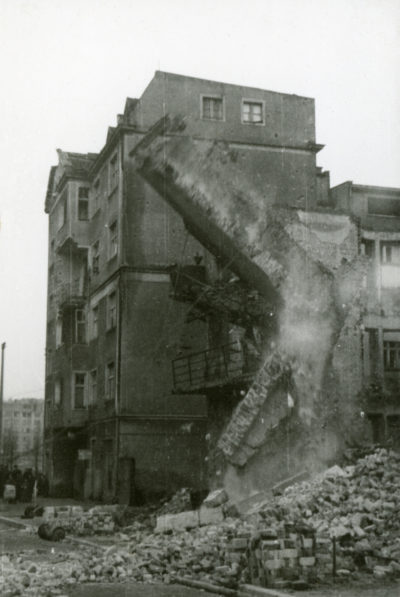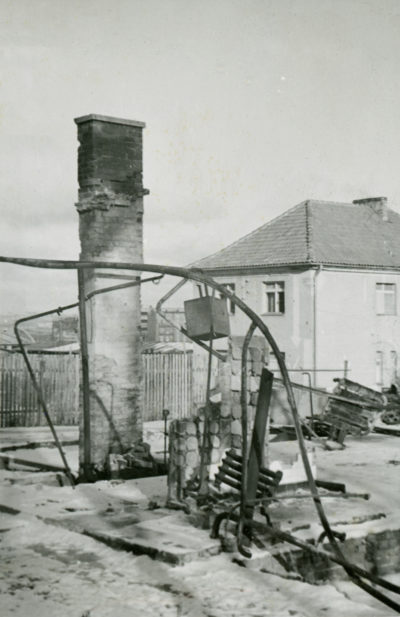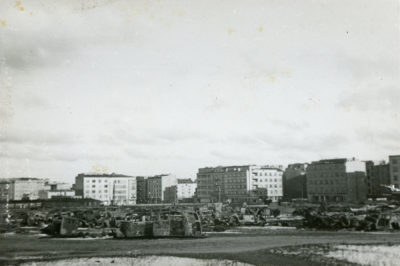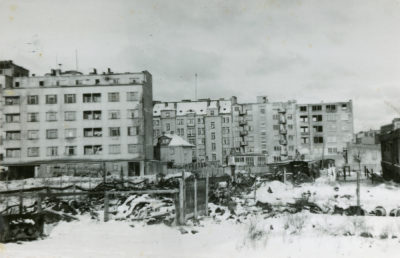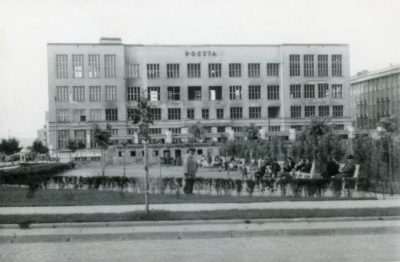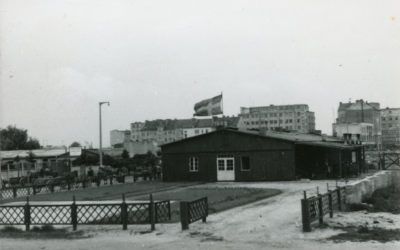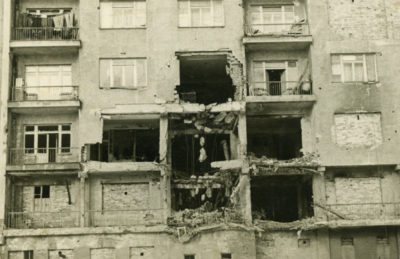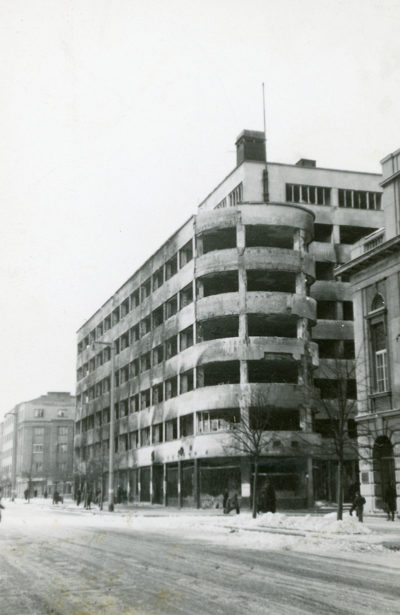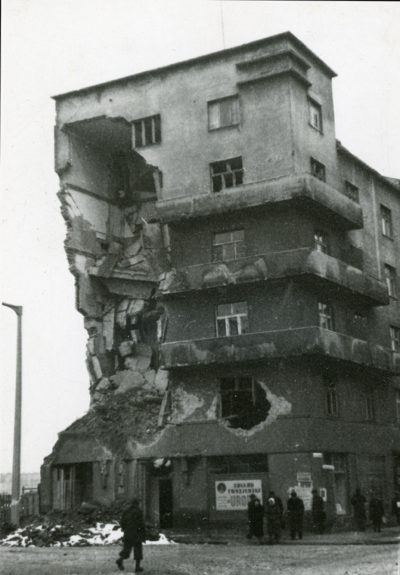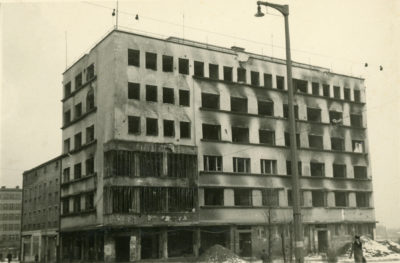Gdynia?s damage and reconstruction in years 1945-1946 (30 objects)
In Gdynia City Museum?s collection there is a binder with 174 photographs stuck on cardboard. They present what the city looked like in 1945-1946. Through the City Public Library in Gdynia, they came to the Museum from Miejska Pracownia Urbanistyczna (City Urban Planning Office).
Due to the events of war, Gdynia sustained gigantic losses. The port was almost completely devastated. After Germans had completed their evacuation, they began methodically destroying the port devices as well as its whole infrastructure. 90 per cent of breakwaters and over half of the quays were damaged. So was about 25 per cent of the warehouses. Vessels and warships were sunk in various parts of the port, like Schleswig Holstein ? the warship whose shots began World War II.
The port?s main entrance was blocked by the wreck of the Gneisenau battleship. The city itself did not suffer too much damage. 16 per cent of the city?s buildings were damaged. Among the most damaged buildings in the city centre there were: the pre-war Social Insurance Institution building in 22-24 10 Lutego Street, the post office building in 10 Lutego Street or Jan Skwiercz?s tenement house in 23 Świętojańska Street. Piles of debris and wrecks appeared in the streets. In the squares like Kościuszki or Grunwaldzki Square, those killed in action were buried. Only in 1946, they were moved to the cemetery in the Redłowo district.
The photographs in the binder show the condition of the city before the start of clearing and reconstruction works or organising of the area. They mainly present the Central Gdynia and the area around it and the following streets: 10 Lutego, Władysława IV, Świętojańska and Jana z Kolna, Starowiejska, Czołgistów (today?s Piłsudskiego Alley). You can also see the areas which are a bit further from the city centre, in Morska and Śląska Street







